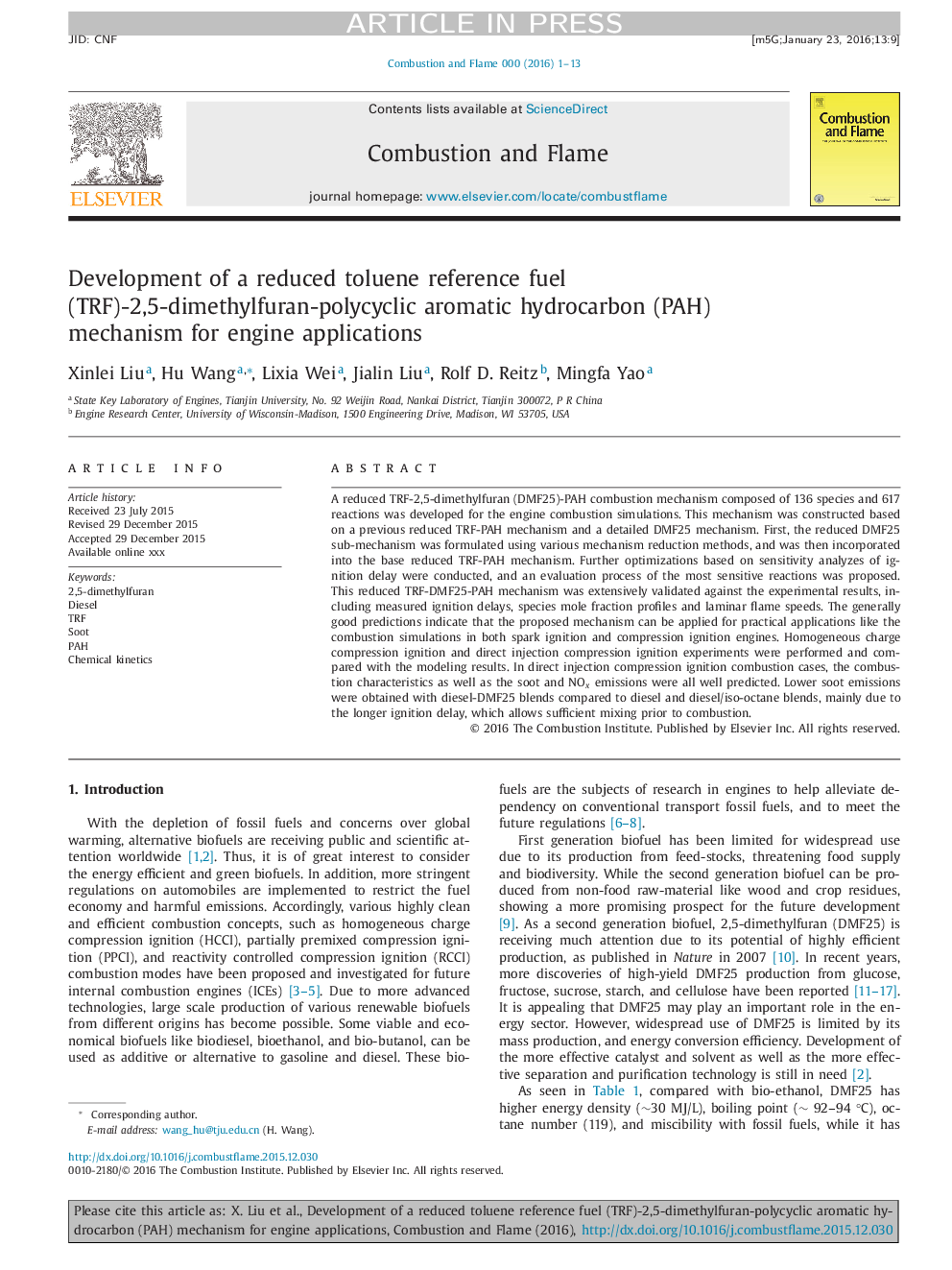| Article ID | Journal | Published Year | Pages | File Type |
|---|---|---|---|---|
| 6594250 | Combustion and Flame | 2016 | 13 Pages |
Abstract
A reduced TRF-2,5-dimethylfuran (DMF25)-PAH combustion mechanism composed of 136 species and 617 reactions was developed for the engine combustion simulations. This mechanism was constructed based on a previous reduced TRF-PAH mechanism and a detailed DMF25 mechanism. First, the reduced DMF25 sub-mechanism was formulated using various mechanism reduction methods, and was then incorporated into the base reduced TRF-PAH mechanism. Further optimizations based on sensitivity analyzes of ignition delay were conducted, and an evaluation process of the most sensitive reactions was proposed. This reduced TRF-DMF25-PAH mechanism was extensively validated against the experimental results, including measured ignition delays, species mole fraction profiles and laminar flame speeds. The generally good predictions indicate that the proposed mechanism can be applied for practical applications like the combustion simulations in both spark ignition and compression ignition engines. Homogeneous charge compression ignition and direct injection compression ignition experiments were performed and compared with the modeling results. In direct injection compression ignition combustion cases, the combustion characteristics as well as the soot and NOx emissions were all well predicted. Lower soot emissions were obtained with diesel-DMF25 blends compared to diesel and diesel/iso-octane blends, mainly due to the longer ignition delay, which allows sufficient mixing prior to combustion.
Related Topics
Physical Sciences and Engineering
Chemical Engineering
Chemical Engineering (General)
Authors
Xinlei Liu, Hu Wang, Lixia Wei, Jialin Liu, Rolf D. Reitz, Mingfa Yao,
